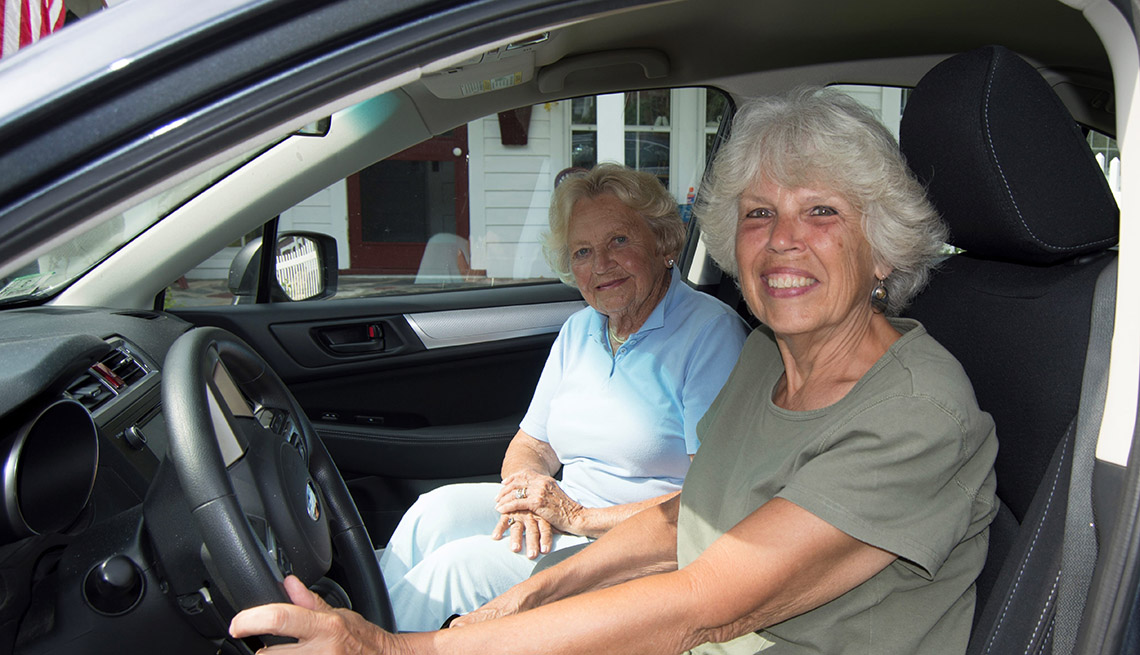
- Select a language for the TTS:
- UK English Female
- UK English Male
- US English Female
- US English Male
- Australian Female
- Australian Male
- Language selected: (auto detect) - EN
Play all audios:
VOLUNTEER DRIVERS FACE INSURANCE DIFFICULTIES IN THE AGE OF RIDEHAILING Lifepath, Inc., Greenfield, MA. SUMMARY: The rise of Uber and Lyft has exacerbated insurance challenges for volunteer
drivers. Insurance agents often have difficulty distinguishing between people using their personal vehicles to make money and those using them to provide transportation as volunteers. This
confusion comes just as the demand for volunteer-provided transportation is rapidly increasing. State legislators and the insurance industry need to get involved to remove barriers to this
invaluable form of volunteerism. THE PROBLEM: More than 8 million Americans ages 65 and older do not drive, and the number is increasing as the population ages. Volunteer-provided
transportation, organized by a local nonprofit or government agency, offers older adults and people with disabilities an affordable way to get to where they need or want to go. The success
of a volunteer-provided transportation program depends on its ability to recruit and retain drivers, and managers of these programs worry about exactly that as they watch demand grow. But
too many would-be drivers are being deterred when insurance agents tell them that their car insurance rates might go up, that they might need a commercial policy or could lose their
coverage. As the popularity of commercial ridehailing began to grow after 2015, the AARP Public Policy Institute (AARP) noticed an uptick in anecdotal reports from nonprofit
volunteer-provided transportation program managers of drivers having difficultly securing insurance for their volunteer services. In response, AARP commissioned the Texas Transportation
Institute (TTI) to explore state laws that might affect volunteer drivers, contacted customer service representatives and agents at 10 of the largest automobile insurance companies, and
surveyed the CEOs of 11 insurance companies. We learned that efforts to regulate and insure this industry exacerbated insurance challenges for people who drive as volunteers. STATE LAWS
DON’T HELP: In response to the burgeoning ridehailing industry, forty-nine states and Washington, D.C. have statutes defining TNCs (Transportation Network Company, e.g. Uber, Lyft, Via) and
related terms. But since none of them explicitly exempts volunteer drivers, volunteer transportation programs and drivers may be inadvertently subsumed under the definitions. Only Washington
state’s statute governing TNCs says that a “commercial transportation services provider” is not a private, nonprofit transportation provider. VOLUNTEER VS. COMMERCIAL DRIVERS: Nonprofit
volunteer drivers use their own vehicles and are reimbursed for mileage and covered by their personal auto insurance policy; their nonprofit programs purchase secondary insurance. A
volunteer’s personal policy is the first line of coverage in a driving event that causes personal injury or property damage as insurance coverage is typically based on driving experience and
miles driven, not on who is in the vehicle. Under the model used by Uber, Lyft and others, drivers are not covered by their personal auto insurance when working (i.e. the app is on).
Drivers, or the company on behalf of the driver, must maintain a separate primary, commercial automobile insurance rider or policy. TERMINOLOGY MUDDIES THE INSURANCE WATERS: For decades,
volunteer activities and carpooling were referred to in the insurance industry as ridesharing. When companies like Uber co-opted the term, confusion ensued among insurance providers. And
while insurance coverage for those driving for ridehailing companies has largely been clarified in recent years, the development of those new policies has increased confusion among insurance
agents regarding volunteer drivers. Insurance company CEOs, however, indicated that as long as the volunteer driving was incidental to the car’s use, and that no profit was involved, a
driver’s personal policy should cover any accidents. Nonetheless, customers deal directly with insurance agents, not company CEOs. Recruitment challenges will continue to exist as long as
agents provide inaccurate or ambiguous information to their customers. SOLUTIONS: Most nonprofit volunteer driver programs are doing their part by purchasing excess automobile liability
insurance, establishing routine safety protocols and properly screening drivers. But they cannot bear the burden of educating every insurance agent their would-be drivers encounter. State
legislators and the insurance industry need to get involved to remove barriers to this valuable form of volunteerism. THE INSURANCE INDUSTRY 1) A recent Insurance Services Office (ISO, an
industry clearinghouse) policy form that distinguishes a vehicle’s use in ridehailing service from volunteer or charitable purposes is a good starting point for clarifying policies. The
policies should also make clear that for-hire or livery status does not apply to volunteer drivers, even if they receive mileage reimbursement or their customers pay fares or fees to offset
the cost of the program. The industry must also manage risk with increased education and awareness among insurers, brokers, companies, and individual agents. Only 7 states prohibit insurance
companies from denying or canceling insurance, imposing a surcharge, or increasing rates solely on the basis of serving as a volunteer driver. STATE LEGISLATORS They should explicitly
prohibit insurance companies from denying or canceling insurance, imposing a surcharge, or increasing rates solely on the basis of serving as a volunteer driver. Seven states currently do
this and AARP’s research found that these laws are effective in protecting volunteer drivers. States should also ensure that TNC laws and other sections of state code clearly define and
distinguish among volunteer drivers, TNCs, and other for-hire service providers, and that volunteer-provided transportation programs, including those that charge passenger fares, are
excluded from for-hire transportation and livery laws. THIS IS URGENT: As one expert explained, “Vehicle insurance issues could end up decimating the volunteer driver programs that we have
today.” These are programs that will be needed even more in the future, and state legislators and insurers can do more to protect volunteer drivers and remove barriers to this type of
volunteerism.



